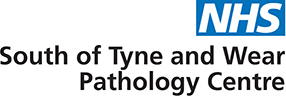IgG Insulin Antibodies
Code:
INSA
Sample Type:
2mL Serum (Gel 5mL Yellow tube)
Ref Ranges/Units:
mg/L
0 – 5 mg/L. Reference range established in house and by PRU collaboration.
Turnaround:
2-3 weeks
Referred to Sheffield daily except Fridays
Special Precautions/Comments:
Indication: Predictor for type 1 diabetes. Insulin resistance.
Interferences: None known
Interpretation: < 5 mg/L Negative. 5-10 mg/L Equivocal. > 10 mg/L Positive. The assay is not able to distinguish between disease-predictive auto-antibodies and antibodies to exogenous insulin. Therefore patient history, symptoms and current prescriptions should be taken into account when interpreting results
Additional Information:
Background Information: Insulin antibodies are beta-cell specific antibodies. Primary Insulin antibodies detected prior to the administration of exogenous insulin can be used in combination with glutamic acid decarboxylase 65 (GAD65) antibodies, islet cell antibodies and protein tyrosine phosphatase 2 antibodies (IA2 antibodies) in the early diagnosis or prediction of type 1 diabetes [2,3]. The presence of insulin antibodies alone are a poor predictor of development of future disease, with a sensitivity of 50-60% in children under the age of 10 years [4]. However prediction of future disease development may be made by using the autoantibodies in combination [6]. Individuals with two or more of the autoantibodies have a 68% 5 year risk of developing type 1 diabetes. Those with 3 autoantibodies had a 100% 5 year risk of the disease [4]. Insulin antibodies along with GAD65, Islet cell antibodies and IA2 antibodies may be of use when investigating latent autoimmune diabetes of adulthood (LADA). Approximately 10% of patients diagnosed with type 2 diabetes have LADA which requires insulin therapy. LADA may be distingushed from type 2 diabetes by the presence of the autoantibodies [1]. Secondary anti-Insulin antibodies can also be produced in response to exogenous insulin, and can nullify its effect, requiring higher doses to be administered, or a change to a different species as the source of insulin [2,5]. These antibodies can be a cause of insulin resistance but many diabetics treated with insulin often develop antibodies to the insulin (porcine, bovine or human recombinant) without obvious adverse effect on control [5]. There is no readily available assay to determine their inhibitory effect. Insulin antibodies may be seen in autoimmune polyendocrinopathies, in association with other organ-specific autoimmune conditions or following administration of thiol-containing drugs [2].
References: Brophy S, et al. Interventions for latent autoimmune diabetes (LADA) in adults. The Cochrane Collaboration. 2009. [Ref 1] PRU Handbook of Autoimmunity. 4th Edition. 2007. [Ref 2] Franke B, Galloway TS, Wilkin TJ. Developments in the prediction of type 1 diabetes mellitus, with special reference to insulin autoantibodies. Diabetes Metab Res Rev. 2005. 21(5):395-415. [Ref 3] Pihoker C, Gilliam LK, Hampe CS et al. Autoantibodies in diabetes. Diabetes. 2005. 54 (supplement 2):S52-S61. [Ref 4] Sapin R. Insulin assays: previously known and new analytical features. Clin Lab. 2003. 49(3-4):113-121. [Ref 5]
See Also: Glutamic acid decarboxylase; islet cell antibodies; IA2


